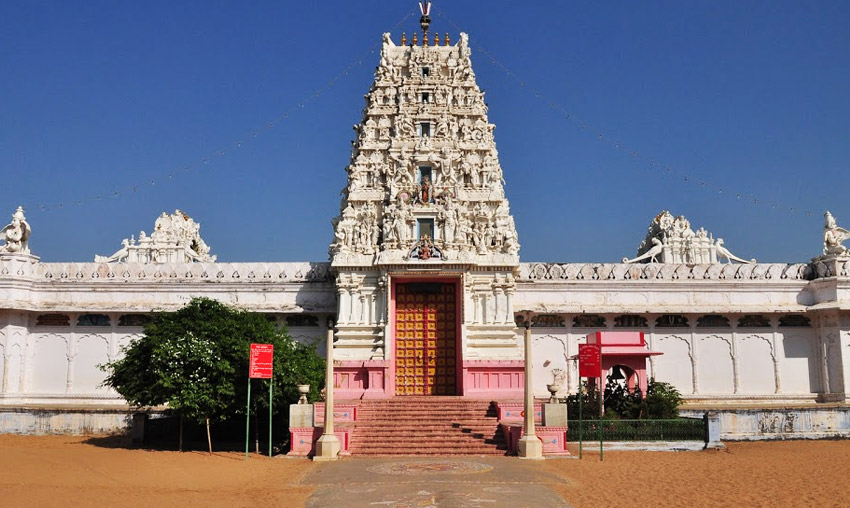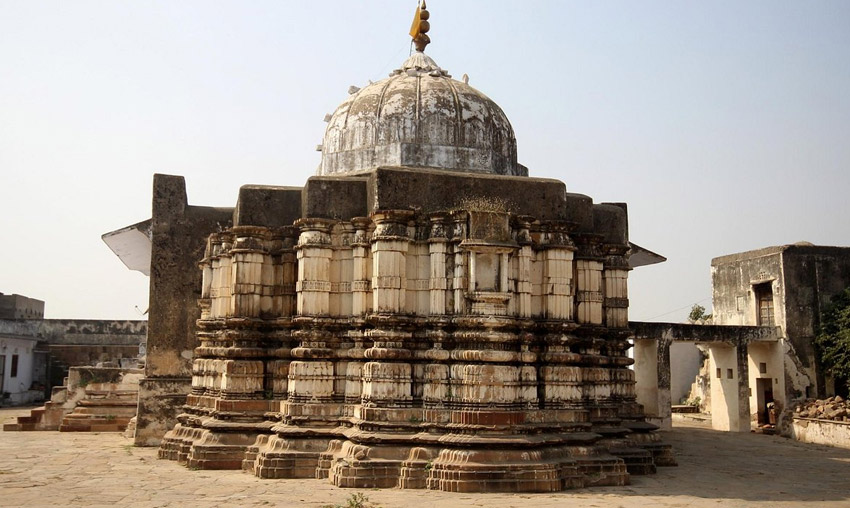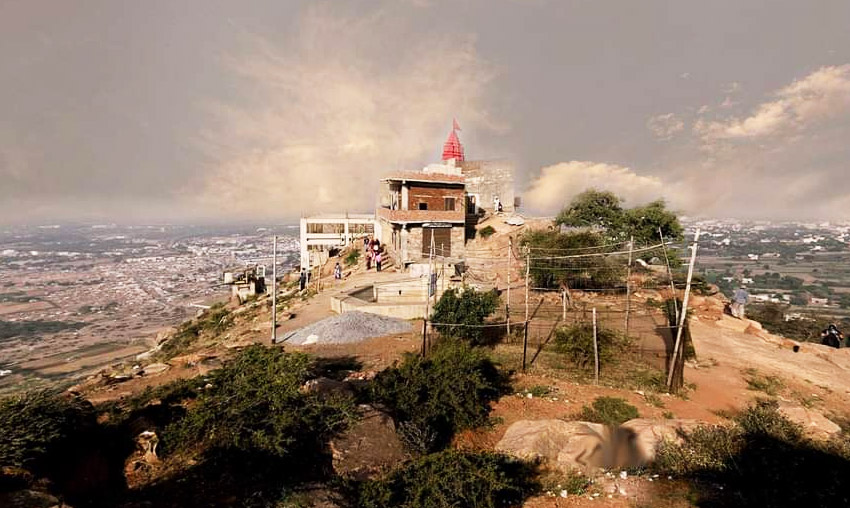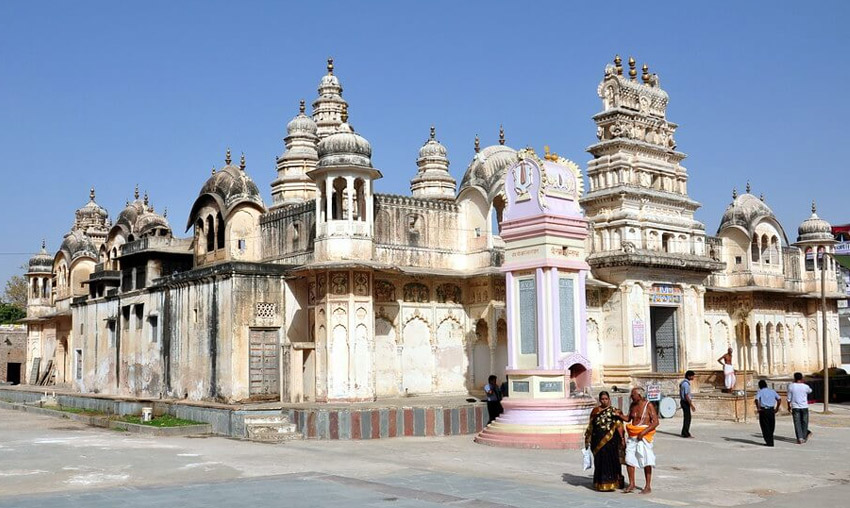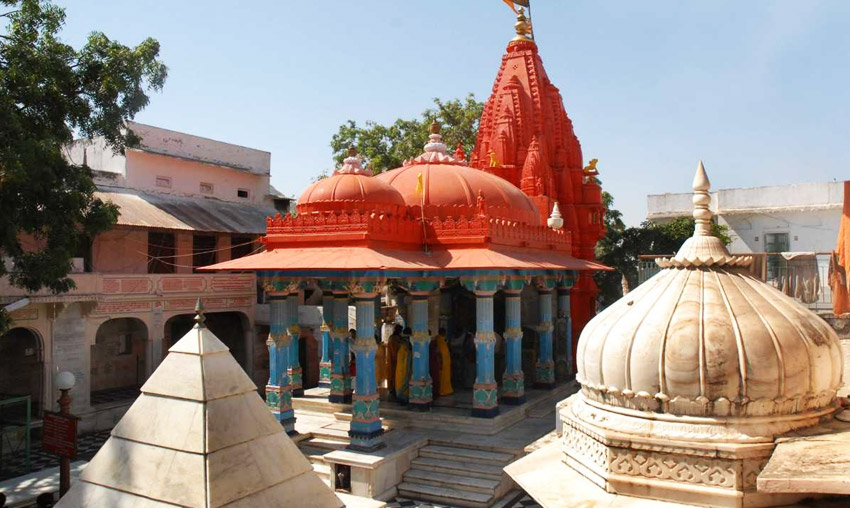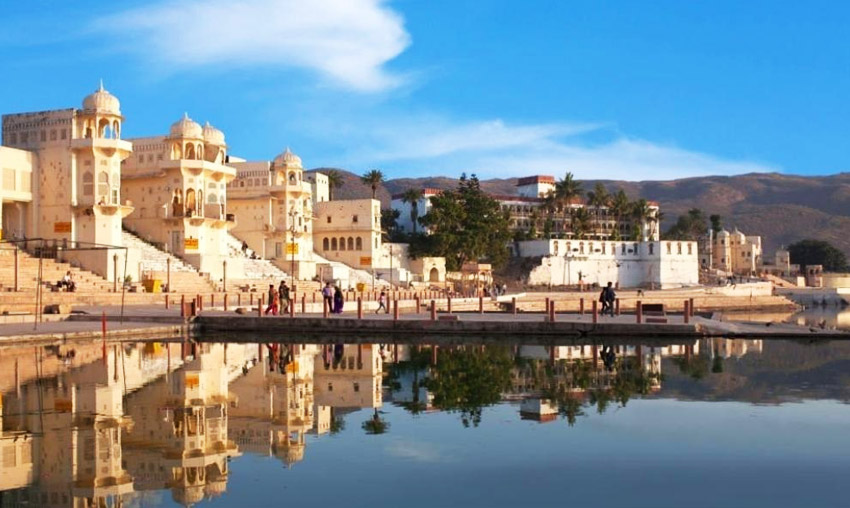Rama Vaikunth Nath Swami Temple, Pushkar Timing & History
The Rama Vaikunth Nath Swami Temple, also called New Rang Nath Ji Temple, is a magnificent representation of devotion and architectural genius located at the entrance to the holy town of Pushkar in Rajasthan, 10 kilometers northwest of Ajmer City. Constructed by Seth Magniram Bangar of Didwana, Marwar, this temple is a vast complex spanning 20 bighas of land and is dedicated to Lord Vishnu and Goddess Lakshmi.
Deeply rooted in history, the Rama Vaikunth Nath Swami Temple was built between 1920 and 1925. It is a part of the Jayakhyam Sect of the Shri Vaishnava Sampradaya, and all of its ceremonies are performed in Sanskrit. The rich cultural tapestry of Rajasthan is demonstrated by the temple’s history, which is entwined with the area’s spiritual legacy.
Architecture of Rama Vaikunth Nath Swami Temple, Pushkar
The temple’s construction adheres to the Jayakhyam Samhita’s architectural rules, guaranteeing accuracy in the idols’ dimensions and shapes as well as the Gopuram’s (ornate monumental tower) construction over the inner temple. The elaborate work, which included the spire of the Gopuram bearing the symbols of 361 Gods or Devtas, was completed by South Indian masons.
Idols and Worship at Rama Vaikunth Nath Swami Temple, Pushkar
Two idols are housed in the main temple, Vaikuntha Venktesh: one of Goddess Lakshmi Narsingha, which was brought from the Deccan, and another of Lord Vishnu, which was created by Dravid architects. The main temple conducts the worship rites six times, while the other eight temples do so five times. Food for all nine temples is prepared in a shared kitchen and served to the devotees after being presented to the idols.
Rama Vaikunth Nath Swami Temple Highlights
1. Garud Dhwaja Pole
A golden Garud Dhwaja Pole, representing Lord Vishnu’s mount Garuda, stands tall in front of the inner temple. With its intricate carvings, the outer Gopuram, which is located above the main entrance, is a tribute to the skill of South Indian masons. The temple’s Vaishnava identity is emphasized by four Garuda images on the walls.
2. Hindolas (Monsoon Festival)
Duration: Lasting for 15 days in the month of Sravan.
Significance: The arrival of the rainy season is heralded by the grand celebration known as the monsoon festival of Hindolas. In order to obtain Lord Vishnu’s blessings, devotees engage in rituals and prayers while soaking up the festive atmosphere.
3. Brahmseva (Chaitra Festival)
Duration: Extending for 10 days in March/April.
Significance: The Chaitra festival, also called Brahmseva, is a period of devotion and introspection. In celebration of Lord Vishnu’s divine legacy, the temple complex comes to life with rituals, cultural performances, and a shared sense of reverence.
4. Kartik Fair
Significance: Both locals and tourists are enthralled with the Kartik Fair’s spectacle. With processions, rituals, and cultural events, the temple complex turns into a hive of activity. Tourists and pilgrims alike participate in the celebrations, fostering a spirit of happiness and group gathering.
Must know
The temple complex houses several smaller temples, each with its unique dedication:
- Lakshmiji Temple: Dedicated to the first wife of Lord Vishnu.
- Godambaji Temple: Dedicated to the second wife of Lord Vishnu.
- Raghunath Ji Temple: Honoring Lord Rama.
- Temple of Lord Srirangnath: Reflecting the devotion to Lord Vishnu.
- Sudarshan Bhagwan Temple: Illustrating the Sudarshana Chakra of Lord Vishnu.
- Ramanuj Temple: Dedicated to the visionary who strengthened the Ramanuja cult.
- Vedantdeshik Temple: Honoring the man who fortified the Ramanuja cult.
- Temple of Lakshminarayan: A significant addition to the sacred complex.
